Yesterday’s article looked at how the late paintings of Rembrandt and JMW Turner became more radical, bringing their careers to an end with a succession of paintings which were of enduring importance, more so than their earlier works. Today I look at four nineteenth century artists whose styles also changed in their later years, to achieve new heights.
From his earliest years as an artist, Gustave Courbet’s work such as A Burial at Ornans (1849-50) was innovative and often controversial, but was expressed using quite conservative style and technique.
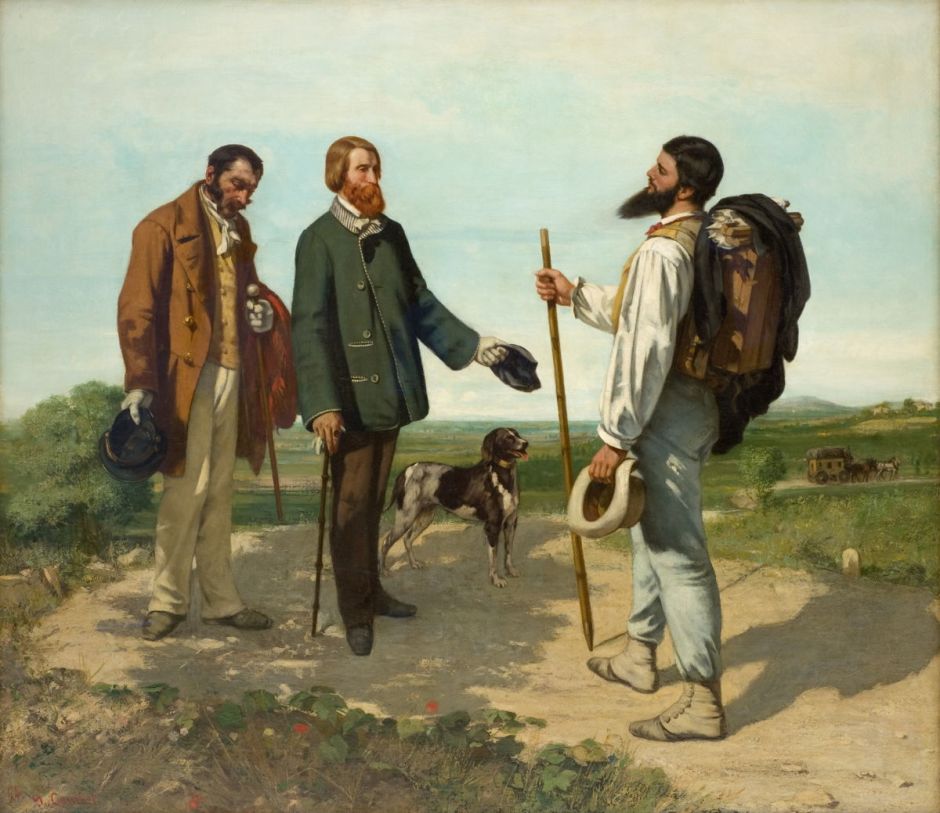
The art collector Alfred Bruyas is centre stage in Courbet’s tribute The Meeting, painted in 1854, and exhibited at the Exposition Universelle the following year. Its composition is based on the traditional theme of the wandering Jew, but it appears slightly stilted and contrived. During the 1860s he returned to painting more landscapes, notably winter scenes and the north coast of France.

His coastal paintings came to concentrate on the waves breaking on the beach, as in his Autumn Sea from 1867, where two sailing boats are the only forms to punctuate its horizon. His style was avant garde, with a sky which could have come from Turner’s hand, and rich marks throughout the waves.
As a result of his involvement in the Paris Commune in 1871, Courbet’s later years were troubled legally and financially, and he was forced into exile in Switzerland.
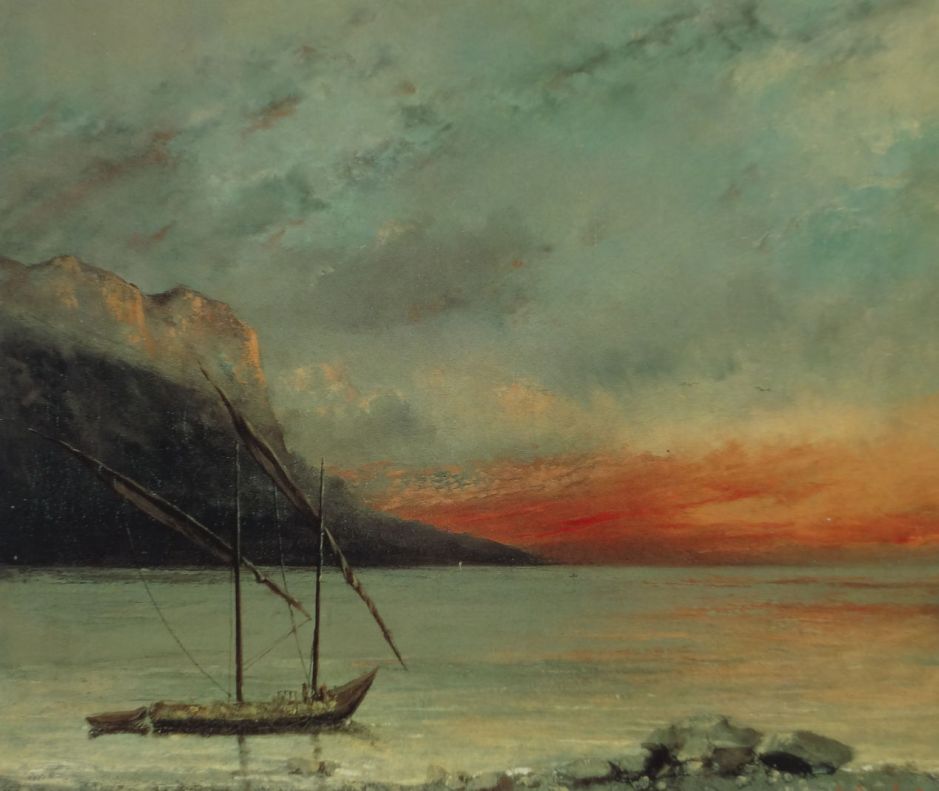
There he painted some of the finest landscapes of his career, like this Sunset over Lac Leman from 1874, the same year as the First Impressionist Exhibition in Paris.
At that time, Paul Cézanne was learning to paint Impressionist landscapes in the countryside around Paris alongside Camille Pissarro.

These continued when he was back at his family home near Aix-en-Provence. His brilliant depiction of the pool at the family home of Jas de Bouffan is a good example of his use of colour, and faithfulness to the details in the motif during this period.
It was during a visit to the Alps in 1896 that Cézanne’s painting changed most markedly.

This is one of Cézanne’s best-known paintings, which has been reproduced and discussed extensively. It shows a view across Lake Annecy from Talloires, featuring the distinctive Château de Duingt and the foothills which rise behind it.
Comparison with views of the actual motif reveals that Cézanne has brought the far shore considerably closer to the viewer than it really is, by enlarging all the objects on that shore. House (2008) stated that the château is about one mile away from Cézanne’s viewpoint, but measurement on modern satellite images shows the distance to be 0.76 km or just under half a mile.
A distinctive feature of his post-Impressionist style is what has become known as his constructive strokes, parallel brushstrokes used for tiled passages most commonly in the canopy of trees.

Cézanne’s final oil paintings are generally seen as precursors of Cubism and modernism, in that form almost breaks down completely, and the painting is dominated by patches of colour laid down using constructive strokes, as seen in Wood (1900–2). The only indication that there are trees here are sporadic passages of drawn trunks and fragments of branches.
His watercolours from these late years are even more radical in their departure from Impressionism.

I haven’t seen any coherent account of Cézanne’s late works which embraces both his oils and watercolours, and Cézanne himself didn’t explain their differences either. However those watercolours are clear in making the outlines of objects such as trees very visible, if usually depicted by a bundle of curves rather than a single line. Within those are flares of brilliant colour, and between are large areas of white space.
Ferdinand Hodler’s style underwent a more gradual evolution, in which he developed a mature style in both his landscapes and figurative paintings.
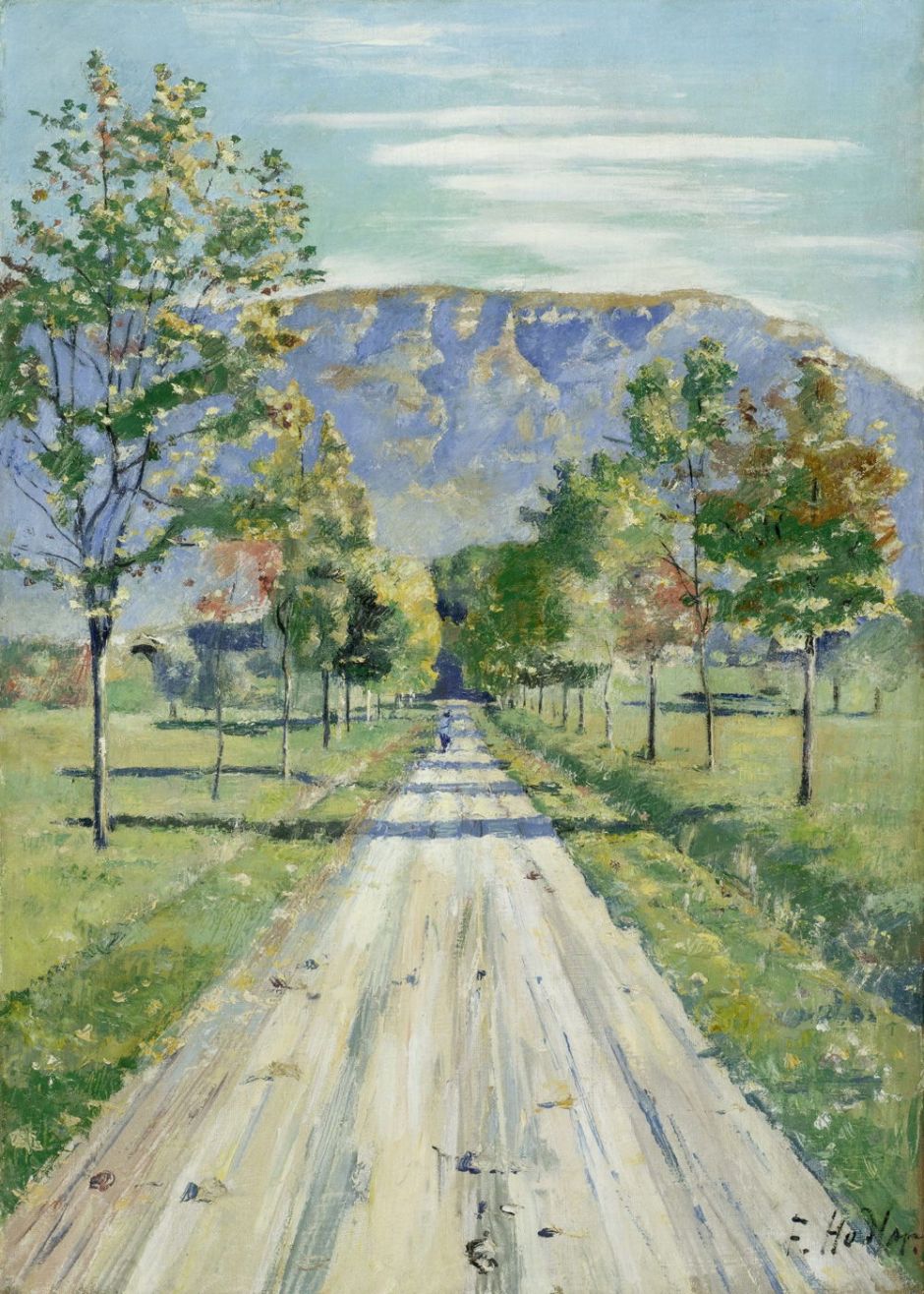
Hodler’s landscape motifs had shifted from early influence by his pioneering compatriot Alexandre Calame, and came to explore symmetry and rhythms in nature, as in The Road to Evordes (c 1890), above.
During his last few years, his landscapes reached their most sublime, when he was confined to his home which afforded him fine views across Lake Geneva to the massifs and peaks beyond.
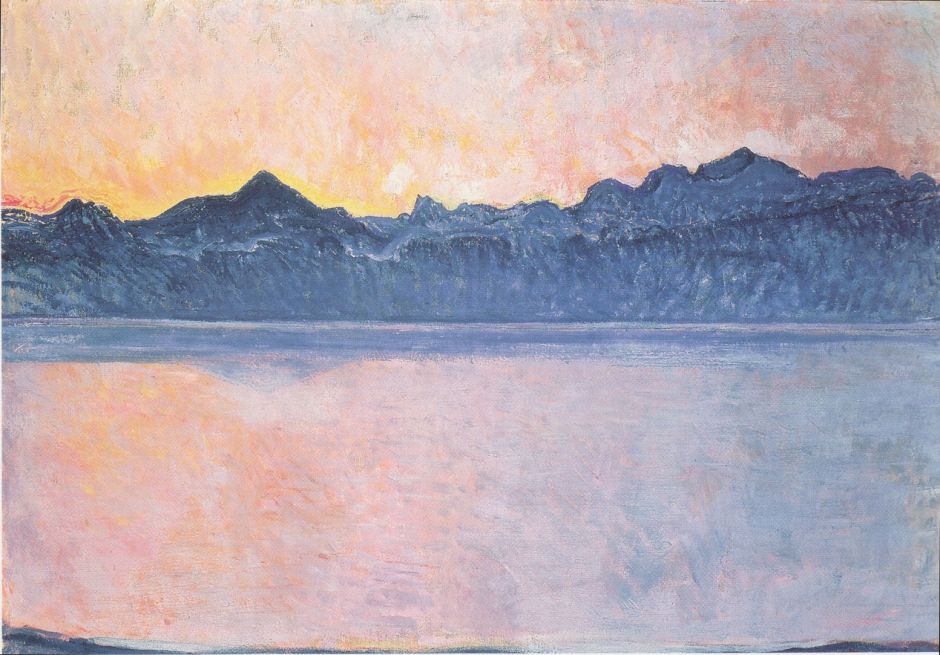
Lake Geneva with Mont Blanc in the Morning Light (1918) has a simple structure, with the water, a band of reflections, the mass of the far shore and mountains merged, and the dawn sky. The dominant colour is the yellow to pale red of the dawn sky and its reflection.
My final example of a radical change in an artist’s late style is that of the Divisionist Paul Signac. He met Claude Monet and Georges Seurat in 1884, as the latter was setting out the beginnings of Neo-Impressionism. Impressed by the theoretical basis propounded by Seurat, he abandoned the small brush strokes of Impressionism for the tiny painted dots of Divisionism. He painted with van Gogh in 1887 at Asnières, and visited van Gogh at Arles in 1889, by which time he had become an anarchist alongside Camille Pissarro. He was shocked when his close friend and the leader of Neo-Impressionism, Georges Seurat, died on 29 March 1891 after a brief illness.
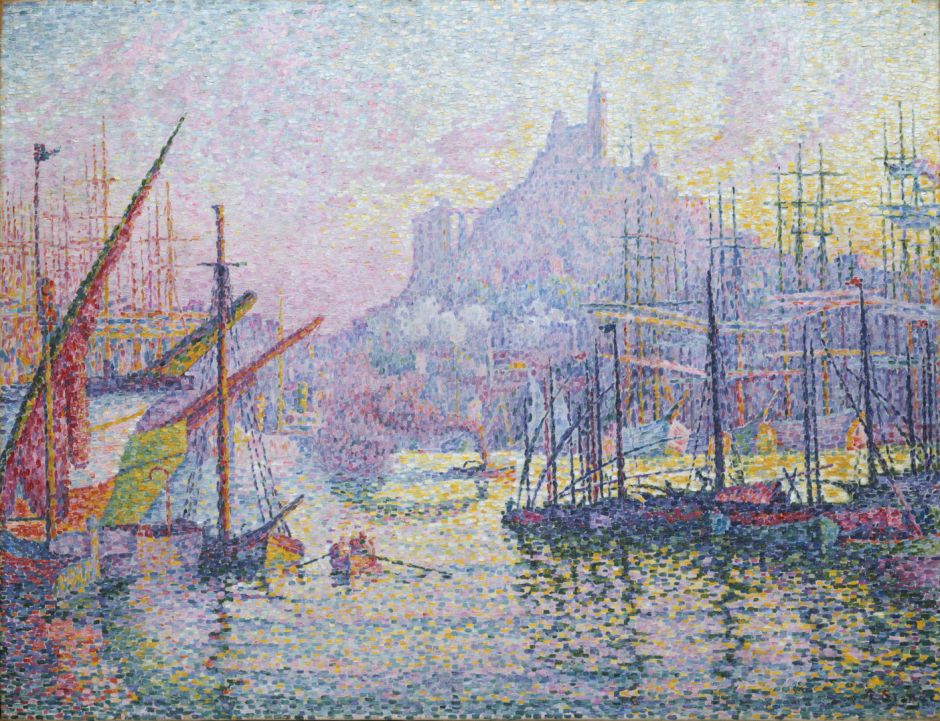
His Divisionist masterpiece Notre-Dame-de-la-Garde (La Bonne-Mère), Marseilles (1905-6) is constructed from a great number of small rectangular tesserae of paint, coarser-grained in the foreground, finer and almost merging in the distance and sky. Its overall effect is of luminous and vibrant colour. The painting was shown in 1906 at the annual exhibition of the Société des Artistes Indépendants.
Signac moved to the south of France in 1897, living at first in Saint-Tropez, which was undiscovered as a resort at that time. The area became popular with artists, including Pierre Bonnard, who also sailed and settled there. As a technique, Divisionism had proved a dead end, but the vibrant studies of light and colour produced by Signac and others form a unique record of the Midi at that time, and had a lasting impact on painting.

During the war years, Signac finally abandoned the last vestiges of his long career as a Divisionist, and created vibrant sketches in watercolour and crayon which perhaps owe more to Cézanne’s late watercolours than anything Signac had painted earlier.
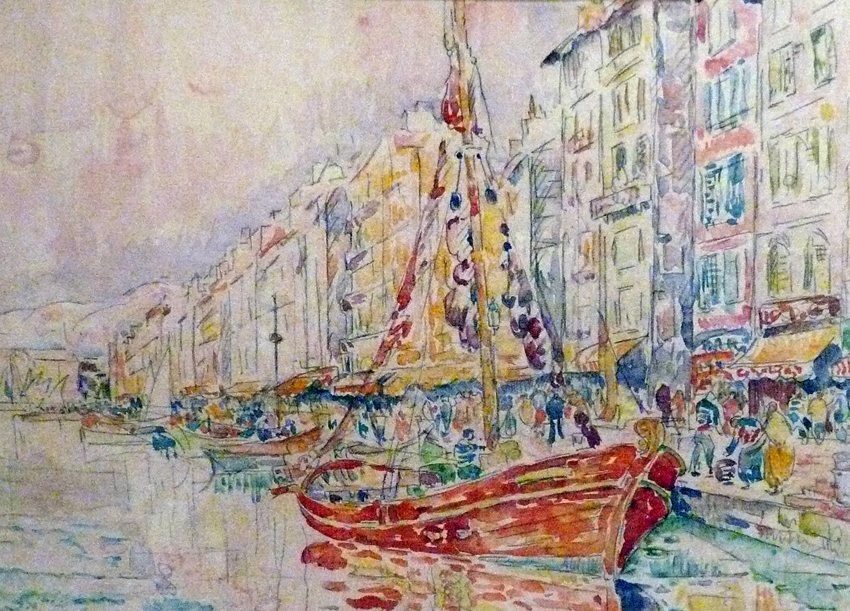
During his sixties, Paul Signac painted thoroughly modern coastal landscapes using modern mixed media. In doing so he followed a tradition which went back to Rembrandt at least. Older artists often enjoy greater freedom, which encourages them to experiment. So you think you’re past your best when you reach sixty or even seventy?

